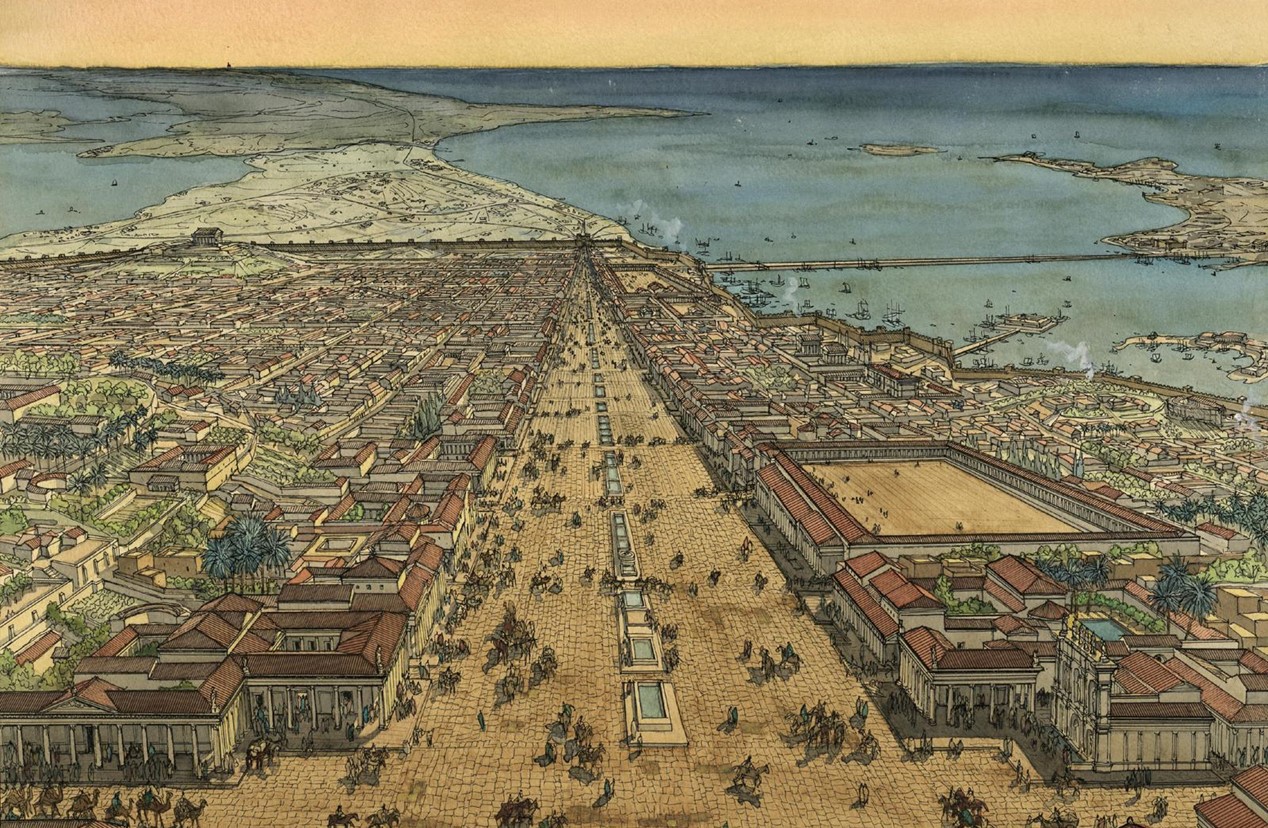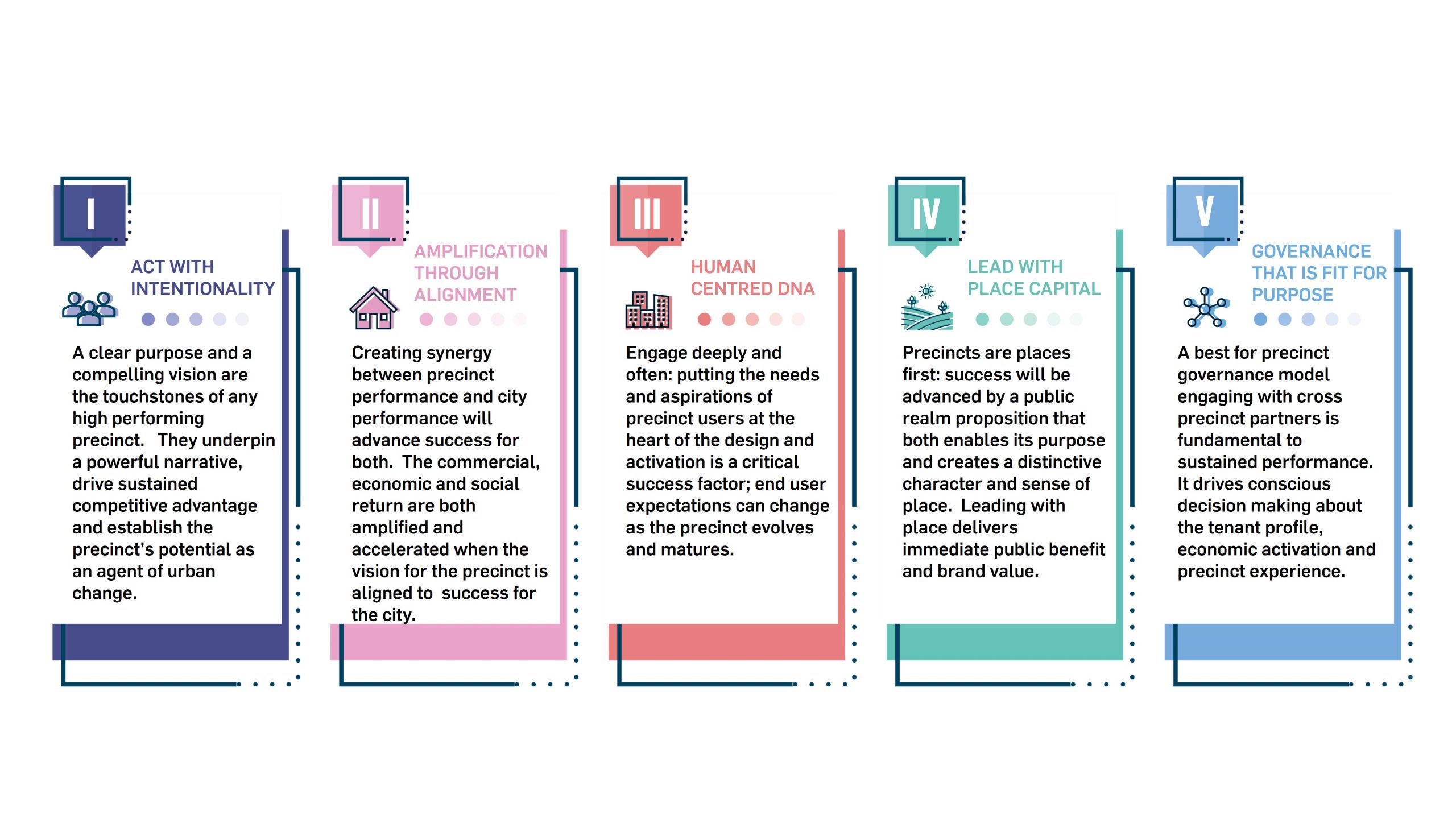Precincts are an important agent of change for our cities- but not all precincts are equally powerful; what can we discover from ancient history about the hallmarks of high-performance?
Precincts are the new urban-black.
The combined drivers of urban renewal or regeneration and transport investment are bringing forward precinct developments across the landscape of Australian cities both large and small. A conversation about how to leverage these opportunities is timely, given precincts are undoubtedly a powerful force shaping contemporary competitive advantage, urban landscape, and quality of life. Their scale, bigger than a site and smaller than a suburb, positions them perfectly as an agent for change- delivering bold responses to pressing challenges including climate change, urban resilience, social cohesion, and new models of civic governance.
Whilst preparing for a Precincts masterclass at the recent Property Council of Australia’s national Property Congress, I set out to discover where the concept of precinct scale development originated – London, Tokyo and even Singapore were hot contenders in my mind. The answer came as a surprise: precincts have been drivers of urban competitiveness driving the cultural and economic fortunes of great cities for more than two thousand years – with the first well-documented example being found in Ancient Alexandria in 332 BC.
One of the greatest cities in the world for a thousand years, Alexandria’s cosmopolitan vitality, urban lifestyle and cultural institutions made it not only a centre of international trade but also a magnet for talent and capital – although they may not have used those exact words at the time.
It was a bold and flamboyant city, founded on cutting edge thinking in architecture, planning and civil engineering; and intentionally designed as a place of science and scholarship.

Alexandria attracted the most creative thinkers and enabled their prodigious ingenuity through a grandly designed and carefully curated precinct, The Mouseion. Today we might imagine this place as part knowledge campus, cultural district, and innovation precinct – anchored by its library, theatre, botanical gardens, lecture spaces and laboratories. Based on accounts written at the time, we know that its iconic institutions, including the Great Library, were set in a distinctive urban realm where the cultural programming and civic discourse were a drawcard for the wider community.
The inter-generational outcomes from this act of ancient generosity have given the world a significant legacy.
More than two millennia before the Industrial Revolution, Alexandria’s scientists and inventors determined the circumference of the world and defined the human nervous system; invented the vending-machine, designed a rudimentary fire-engine and developed both wind power and steam hydraulics. The contemporary disciplines of engineering, physics, mathematics, drama and medicine were exponentially advanced through its unprecedented opportunity for collaboration, proximity to patrons (an early form of venture capitalist) and an environment in which both information and ideas could be shared rapidly.
My reflection: the story of The Mouseion gives the first plausible example of a city that took a planned precinct approach to attracting talent and driving competitive advantage; where it was understood that creative people need creative environments in which ideas could be co-created and information shared rapidly. Remarkably, however, its critical success factors are well aligned with what we can learn from leading exponents of the modern art of precincts – London’s Kings Cross Railyards, Sydney’s Barangaroo, Milan’s Porta Nuova district and Singapore’s Marina Bay.
Here are five fundamentals that transcend not only space but also time, driving powerful and enduring precinct performance for cities and communities:

1. Act with intentionality
Having a clear purpose and a compelling vision of success is fundamental to leveraging the catalytic role of precincts as change agents. Barangaroo, a financial precinct in downtown Sydney, was certified as Australia’s first carbon neutral community – the result of an ambitious environmental vision that drove the precinct design, delivery and operation. Another example – Milan’s Porta Nuova precinct unified three fragmented neighbourhoods in inner-city, increasing urban coherence and delivering a bold new destination that advanced the image of Milan as a contemporary city of design.
2. Amplify and accelerate success through alignment
There is synergy between the performance of the precinct and that of its host, for optimal return on investment, ensure the vision for the precinct is additive to, and advances success for the city. Marina Bay provides a compelling example of harnessing the precinct drivers to the national aspirations for Singapore, the evolution of the precinct progressively matching the increasingly bold ambition of the city-state over several decades. Every part of the wider precinct delivers conscious value; the Gardens by the Bay sub precinct for example strategically strengthens Singapore’s lifestyle appeal and makes good its brand promise of a city in a garden.
3. Establish human-centred DNA
Putting the needs and aspirations of the people who use the precinct at the heart of both its design and activation throughout its lifecycle. Porta Nuova deeply considers what is important to its diverse community of users – workers, residents, students and visitors; delivering an authentic convenient, connected, walkable 18/7 precinct. It has a profound sense of place that combines intimate hyper local moments with the charisma of a global destination; and it inspires people to care and to participate – telling a new story about what it means to be Milanese in the new Millennium.
4. Lead with place capital
Precincts are places too, perhaps even places first – and leading with place capital matters. Their success will be amplified by a public realm proposition that enables its purpose, building its distinctive character and sense of place. London’s Kings Cross Railyards provides an extraordinary example of how the quality and quirkiness of the urban realm can support the evolution of a high value creative-tech precinct and yet at the same time, provide an expansive backyard amenity for Londoners. The nuanced social and cultural activation of this precinct combines the active and passive elements with fixed and pop-up programmes – cementing the precinct as a premier London destination, inspiring the wider renewal and renaissance of its midtown.
5. Fit for purpose governance
Wrapping a strategic management and curatorial layer around the programme and experience of the precinct. Recognising that maximising the value of the precinct comes from purposeful decision making in terms of the economic, intellectual and cultural activation of the precinct: making best for precinct decisions about the selection of anchor tenants and operators who will build and maintain its agglomerative benefits. From Alexandria to Porta Nuova, via Barangaroo, Kings Cross and Marina Bay – effective governance maximises value; however, the model must fit the purpose and may evolve as the precinct matures.
Progressive precinct thinking offers the chance to reshape a city, supporting a bolder, more responsible and inspiring future urban experience. These lesions, which have endured for two millennia, must surely provide a clarion call for the next generation city thinkers and industry leaders.
Kate’s article was originally published on LinkedIn.
